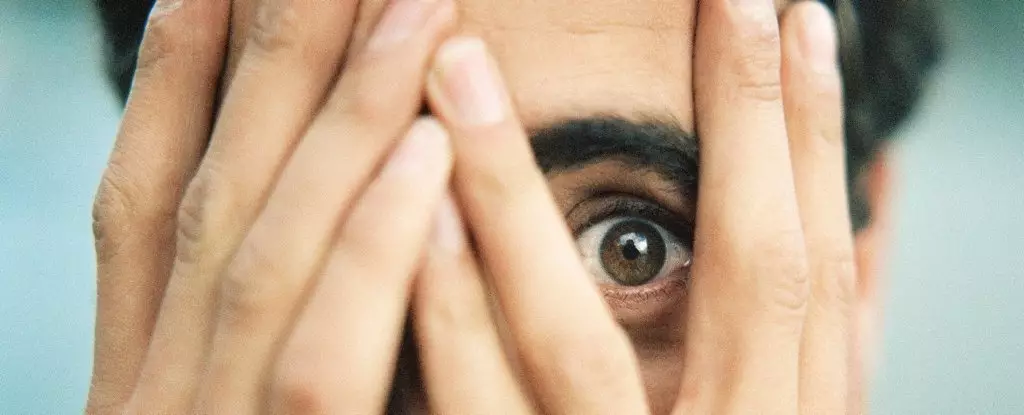Fidgeting is often dismissed as an innocent habit, a mere quirk of restless energy or nervousness. However, there is a deeper, psychological undercurrent at play that can transform benign behaviors into sources of genuine distress. This phenomenon, known as misokinesia, has recently garnered attention within psychological circles, revealing that the mere sight of fidgeting can evoke intense negative responses in individuals who are sensitive to these movements. Surprisingly, studies indicate that this sensitivity is not a rare condition; rather, it impacts about one in three individuals, highlighting a shared social reality that can lead to uncomfortable interactions.
While most people understand the concept of misophonia, which involves heightened sensitivity to specific sounds like chewing or tapping, misokinesia is its less discussed visual counterpart. It represents an intriguing intersection of psychology and social behavior that remains largely unexplored. Sumeet Jaswal, a psychologist at the University of British Columbia, embarked on a ground-breaking investigation into this phenomenon, revealing that the triggers for misokinesia are often more visually oriented than auditory.
A Deeper Dive into Fidgeting Sensitivity
Jaswal’s research marks an essential stride in our understanding of misokinesia. By analyzing data from over 4,100 participants, the study established that reactions to fidgeting behaviors are prevalent not only among clinical groups but extend deeply into the general populace. The findings indicate that many individuals experience profound emotional distress in response to small, repetitive movements performed by others. The implications of this revelation are significant, suggesting that misokinesia is not merely a harmless irritant but a social challenge that can detract from life experiences, be it in professional settings, social gatherings, or learning environments.
The emotional manifestations of misokinesia can be debilitating. Participants noted feelings of anger, anxiety, and frustration, which frequently led to a preference for isolation to avoid the discomfort linked to others’ fidgeting. This creates potential ripple effects on social interactions, where individuals might intentionally withdraw from settings where such distracting behaviors might occur.
The Brain’s Response to Movement
As Jaswal and his colleagues continue to explore the neurological basis for misokinesia, they raise an intriguing avenue of inquiry—whether mirror neurons play a role in this response. These specialized cells are activated not only by one’s own movements but also by observing others’ actions. This mirroring might help explain why some individuals experience vicarious discomfort when witnessing someone else’s fidgeting.
For those who exhibit misokinesia, the sight of fidgeting could lead to an involuntary emotional contagion, as they subconsciously assimilate the anxiety or restlessness exhibited by the fidgeter. Hence, fidgeting might trigger an empathetic response that results in increased personal anxiety or discomfort, creating a feedback loop that perpetuates the distressing experience for both parties. This hypothesis stands as a compelling concept for researchers to explore further.
Social Dynamics and Misokinesia
The occurrence of misokinesia effectively invites us to examine our social dynamics and interaction patterns. It serves as a reminder that not all human experiences are universally understood or embraced. The discomfort associated with visible fidgeting can create barriers to communication and engender feelings of social exclusion or alienation, particularly in environments where individuals expect active engagement and focus.
Moreover, the distinct variations in sensitivity to misokinesia underscore the subjective nature of our interactions. Some individuals may react minimally to fidgeting, while others find it overwhelmingly distracting. This divergence raises questions about how to create inclusive spaces that accommodate diverse sensitivities and allow for healthier interactions.
The Call for Further Research and Understanding
The nascent body of research surrounding misokinesia emphasizes an urgent need for comprehensive studies that seek to unravel its complexities. While pioneering studies have opened the door to understanding this phenomenon, further investigation is needed to explore its extensive implications. With heightened awareness of misokinesia, society might be better equipped to address the discomfort experienced by individuals sensitive to fidgeting, potentially leading to more supportive environments in both personal and professional domains.
The conversation around misokinesia is just beginning, and it invites us to reconsider how we perceive and respond to fidgeting. By acknowledging the struggles faced by those who experience this phenomenon, we can foster a greater sense of empathy and understanding. As society advances towards more inclusive practices, the exploration of misokinesia could be instrumental in enhancing our collective human experience, ultimately contributing to a more harmonious coexistence.

